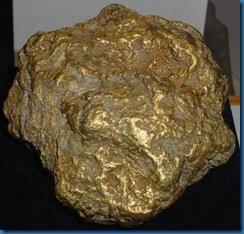An irregular alignment of at least a dozen historic gold mines and prospects extends for 21 kilometers on a trend of about 065° through northwest Randolph County, North Carolina, across the Albemarle Sequence of the Carolina Terrane. The largest and most productive of these deposits include the New Sawyer, Sawyer, Jones-Keystone, and Lofflin mines.
Although hosted by different formations of the Albemarle Sequence, all of these deposits share similarities in the character of hydrothermal alteration, style and tenor of gold mineralization, and apparent structural and lithologic controls. Mineralization is characterized by 3-5 vol% fine-grained pyrite ± pyrrhotite ± arsenopyrite ± trace base metal sulfides as disseminated grains, thin sulfide stringers, and as accessories in thin quartz ± carbonate veinlets that occur as irregular stockworks and cleavage-parallel swarms. Gold and silver are the only economic commodities recovered.
Ore grade mineralization occurs in multiple parallel to en echelon lenses of typically intense silicic alteration 1-10 meters thick and tens to hundreds of meters long, with historic mining grades of 0.25- 0.50 oz/t Au in oxidized ore. The ore lenses are enclosed by zones of strong phyllic alteration tens of meters thick with geochemically anomalous to low-grade (0.03-0.10 oz/t Au) gold mineralization. Multiple zones of hydrothermal alteration and gold mineralization with strike lengths from hundreds of meters to over a kilometer are typically present at the major historic mines.
The structural controls for these deposits are characterized by discontinuous NNE-trending reverse-sinistral displacement shear zones and related meso-scale appressed folds with strongly developed axial planar cleavage. The deformation within these zones contrasts strongly with the less-strongly deformed surrounding host rocks. Deformation, alteration, and mineralization appear to be synchronous with regional greenschist facies metamorphism and localized second-order folding during the later stages of the Cherokee Orogeny (Hibbard et al., 2012), but formed at an oblique angle to earlier structures and fabrics.
This form of relatively low-grade but high-tonnage gold mineralization is a potentially economic bulk-minable, high recovery precious metals exploration target that has attracted periodic evaluation since the mid-1970s. Along with the Russell and Coggins deposits in the Ophir District of Montgomery County, North Carolina, Sawyer-type gold deposits appear to be a poorly defined style of deep epizonal to shallow mesozonal orogenic gold mineralization.

